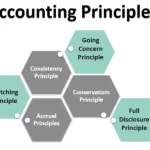Environmental stewardship is rapidly becoming a paramount issue in all sectors, including education. Schools worldwide are aligning their goals towards sustainable practices, but they often face compliance challenges. Striking a balance between eco-friendly initiatives and legal regulations is crucial. In this context, the following strategies can help schools implement green policies within legal boundaries effectively.
Understanding the Legal Landscape
Prior to implementing any eco-friendly policy, schools need to understand the legal landscape. National and international laws regulate waste disposal, energy use, and recycling, among other areas. For instance, the UK’s Plastic Tax imposes specific rules on plastic packaging. Therefore, a robust understanding of legal requirements helps to formulate compliant eco-policies.
Establishing an Eco-Friendly Framework
Following this, schools should establish an eco-friendly framework. The framework should encompass all school activities, from waste management to energy use. Incorporating green initiatives into the school’s policies and daily operations ensures long-term adherence.
Training and Education
Education plays a significant role in ensuring compliance. By incorporating environmental education into the curriculum, students become active participants in green initiatives. Schools could also engage professional training for staff, enhancing their understanding of the school’s eco-policies and the legal requirements. In doing so, everyone in the school becomes a custodian of the environment.
Partnerships with Eco Organizations
Schools can partner with environmental organizations for support. These organizations provide resources, guidance, and tools necessary for implementing and maintaining eco-policies. They also help in navigating the legal landscape, ensuring schools remain compliant with environmental laws.
Monitoring and Evaluation
Continuous monitoring and evaluation of eco-policies is essential. This process includes regular audits to ensure compliance, assessing the effectiveness of policies, and identifying areas for improvement. Schools can also leverage technologies that aid in monitoring resource consumption, waste generation, and recycling rates, making the process efficient and accurate.
Balancing Eco-Friendly Initiatives with Legal Compliance: A Case Study
An excellent example of balancing eco-friendly initiatives with legal compliance is waste management. Schools produce a significant amount of waste, from food to paper and plastics. The implementation of a comprehensive waste management policy can transform schools into zero-waste entities.
A proper waste management policy should comply with the local and national waste disposal laws. The school should understand these laws and incorporate them into their waste management strategies. They should further engage professionals to handle waste disposal, ensuring it’s done within legal parameters.
Next, education about waste management should be part of the school curriculum. Teaching students about waste segregation, composting, and recycling fosters an environmentally-conscious generation. The policy should also encourage staff training for the successful implementation of waste management initiatives.
Lastly, schools should partner with waste management organizations to ensure compliance. These partnerships offer a means to correctly and legally dispose of different types of waste. They also provide resources for waste reduction and recycling initiatives.
In conclusion, compliance with eco-friendly initiatives in schools requires a clear understanding of the legal landscape, establishing an eco-friendly framework, continuous education, partnerships with eco-organizations, and constant monitoring and evaluation. By following these strategies, schools can contribute to environmental sustainability while operating within the law.
For a practical illustration of these strategies, you might find our article on “Exploring the Natural Wonders of the World Through Geography” enlightening. It showcases how geography education can instill a love for the environment and inspire students to participate in eco-friendly initiatives.


